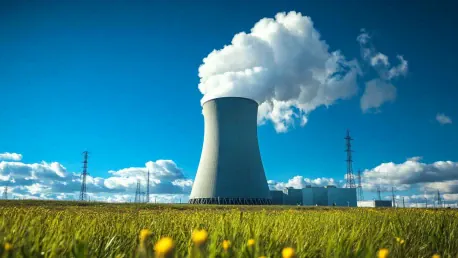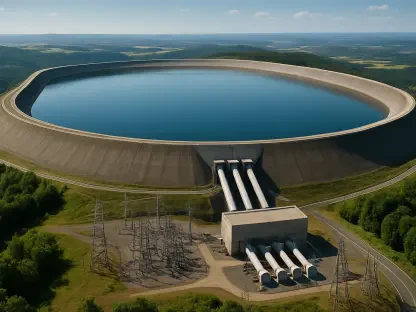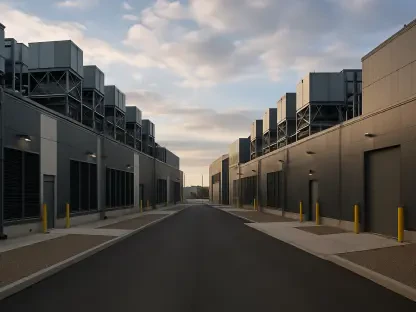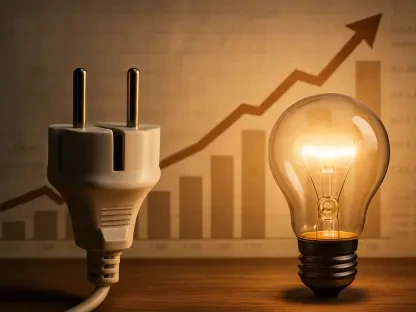Listen to the Article
The world is racing to reduce emissions and move to clean energy. Organizations are rethinking their efforts, and considering new approaches and technologies, and consumers are increasingly demanding greener solutions with a sustainable impact.
Small Modular Reactors (SMRs) are becoming a key focus for all parties, including governments and policymakers, as a potential nuclear solution. Using modular parts and standardized, factory-based construction methods, these reactors provide outputs ranging from 10 to 300 MWe. And thanks to their convenient size—SMRs can be deployed closer to end-users, reducing transmission losses and operating more efficiently than larger reactors.
The world’s looking into an energy future that’s established on two core principles: Compactness and modularity.
Technology companies are already making agreements with SMR producers to power their energy-intensive data centers sustainably. In addition, developing countries are turning to SMRs as a more affordable option for smaller, decentralized grids. Many governments, such as the UK, believe that SMRs could play an important role in supporting a secure, affordable, and decarbonized energy system.
Thanks to their smaller size and lower upfront costs, SMRs present a viable nuclear power solution for countries and industries that may not be able to accommodate larger, traditional reactors. This is driving innovation in the nuclear power sector, with over 70 SMR designs in various stages of development and deployment worldwide.
The Promises and Challenges of SMRs
Energy companies and governments are starting to invest in SMRs. Many see them as an important part of their future energy plans, but many questions are still daunting to decision-makers:
Will they be used widely? And how soon?
What regulatory hurdles do SMRs face in terms of global adoption?
What role do governments and international collaborations play in advancing SMR technology?
How do the costs and benefits of SMRs align with global sustainability goals?
While some concerns have been addressed, many remain. Governments are beginning to support SMRs, but there are still regulatory challenges. Moreover, businesses still face challenges, such as high upfront costs and long-term financial concerns. Scaling up the use of SMRs is an overwhelming task.
Tech Giants Accelerate the Push for SMRs Amid Regulatory Hurdles
With Artificial Intelligence (AI) and data centers demanding much power, tech giants such as Google and Microsoft are increasingly looking for new, greener ways to power their businesses. In addition, Amazon is planning to invest more than $500 million to develop SMRs.
According to McKinsey & Company’s consultants, data centers in the U.S. alone are forecasted to account for 11%–12% of total domestic demand in 2030, compared to 3%–4% today.
Moreover, Holtec International recently announced a transformative, novel Combined Nuclear/Solar Power plant design to restrict the rise of carbon in the environment.
The Combined Nuclear/Solar Plant (CNSP) combines nuclear and solar energy to create clean, carbon-free power. It uses a small nuclear reactor (the SMR-300) and a solar thermal system to generate electricity. The Green Boiler stores solar heat and turns it into steam, helping the plant produce energy more efficiently—even when the sun isn’t shining.
This design is also viable for places switching from coal to cleaner energy. The CNSP can use old coal plant land and equipment, making the transition easier and cheaper. The combination of solar and nuclear makes it more reliable, with no need for batteries, and it’s designed to last over 60 years. This trend is gaining popularity.
Constellation made an agreement with Microsoft to supply power for the next 20 years by reopening a nuclear reactor at Three Mile Island. This reactor, which had been shut down, is set to restart as part of the deal. Constellation had to ask the Nuclear Regulatory Commission (NRC) for permission to restart the reactor by restoring its operating license.
Physical work is expected to begin in early 2025 and will cost at least $1.6 billion. This project will require thousands of workers—and necessitates nuanced modifications to obtain the proper permits.
Consumer Concerns and the Road to Safe Nuclear Power
Consumers have mixed feelings about SMRs. While some see them as a safe and clean energy option, others are concerned due to the history of nuclear energy. Safety, environmental impact, and trust are key issues.
Educating the public about SMRs is crucial. Many people don’t fully understand how SMRs work, and without clearing up misconceptions, acceptance may take longer.
Nuclear power has become safer over time because accidents have forced the industry to learn from its mistakes. After the devastating accident at Chernobyl in 1986, the nuclear industry started focusing on the idea that “an accident anywhere is an accident everywhere.”
The Fukushima disaster in Japan in 2011 showed how dangerous things can get when safety systems at a nuclear power plant fail. In the U.S., the nuclear industry promised that such an accident wouldn’t occur.
There are steps the industry can take to make nuclear power plants safer, such as following strict rules about fire safety, preparing for earthquakes, managing flood risks, and storing nuclear waste more securely.
The Union of Concerned Scientists (UCS) believes that having strong safety rules helps everyone, including the nuclear industry. They have been working since 1969 to ensure nuclear power plants stay safe. They aid the NRC enforce safety rules and resist pressure from the nuclear industry to deregulate stringent rules.
In March, Talen Energy announced the sale of a large data center to AWS. The data center, which uses 960 MW of energy and generates 2.5 gigawatts of power, is located on a 1,200-acre campus and is powered by the nearby Susquehanna nuclear power plant.
In response, recently, the Federal Energy Regulatory Commission (FERC) rejected AWS and Talen Energy’s interconnection service agreement (ISA), raising concerns about the future of data center colocation at nuclear power plants.
While SMRs offer reliable, low-cost energy without the environmental damage of fossil fuels, it will take time before people fully accept them.
Conclusion
As the world works to combat climate change and move away from fossil fuels, the focus on SMRs increases. These smaller nuclear reactors are more efficient, cost-effective, and versatile than traditional, large-scale reactors.
While industry tech pioneers like Google, Microsoft, and Amazon are already exploring SMRs to meet the growing energy demands of their data centers—many unanswered questions about their safety, cost, and how quickly they can be deployed hinder progress.
The public perception of nuclear energy remains mixed, and convincing people that SMRs are a safe and reliable option will surely take time. Additionally, governments and industries will need to work through regulatory hurdles to ensure the technology can scale up efficiently.
As innovation continues and more businesses and governments back the technology, SMRs could become an essential part of the world’s energy future.
The journey won’t be without bumps. But, SMRs could provide the clean, sustainable energy needed for a greener planet.









